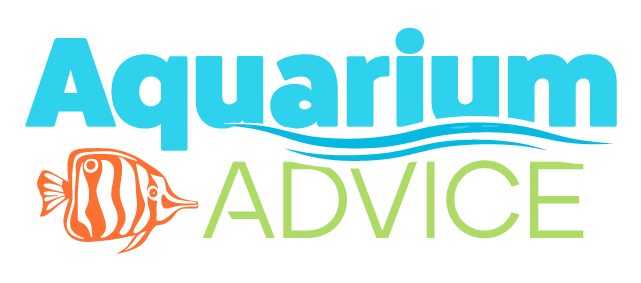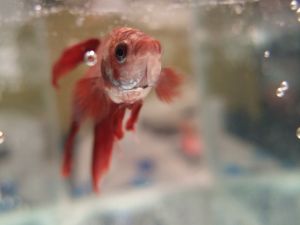Making Tap Water Safe for the Aquarium by Removing Chlorine and Chloramine
This article was contributed by Aquarium Advice member QTOFFER
In the late nineteenth century, contaminated drinking water continued to cause frequent and deadly epidemics of cholera, typhoid fever, dysentery and gastroenteritis. As public health officials began to more clearly understand the link between microorganisms and human disease, the disinfection of municipal water supplies became increasingly common. In 1908, Jersey City, NJ became the first U.S. city to disinfect its water supply with sodium hypochlorite. Soon after, other cities joined in; and within 30 years, waterborne diseases were virtually eliminated in the United States.
Chlorine – Drinking water is usually chlorinated by the addition of chlorine gas (Cl2) or sodium hypochlorite (NaOCl) solution (bleach). These chemicals react with water (pH < 7.5) to produce hypochlorous acid (HOCl), a very potent disinfectant.
Chlorination using chlorine gas: Cl2+ H2O ? HOCl + HCl
Chlorination using sodium hypochlorite: NaOCL + H2O ? HOCl + NaOH
Chlorine and hypochlorite are relatively inexpensive and highly effective against most microorganisms. They also provide good residual protection from secondary contamination that may occur after the water has left the treatment plant. However, HOCl is short-lived in water and it reacts with dissolved organic compounds to produce potentially harmful byproducts.
Chloramine – While most water providers in the U.S. use chlorine gas or hypochlorite as their primary disinfectant, a growing number are also using chloramine (NH2Cl). Chloramine is formed by a reaction between ammonia and hypochlorous acid in chlorinated water.
Formation of chloramine: NH3 + HOCl ? NH2Cl + H2O
Although chloramine is a weaker disinfectant than HOCl, it is much more stable in water and provides better residual protection. It also does not generate as many harmful organic byproducts.
Toxicity of chlorine and chloramines – In 1998, the editors of Life Magazine hailed chlorination as “probably the most significant public health advance of the millennium”, but aquarium fish and invertebrates would most likely shake their heads, antennae, and tentacles in complete disagreement.
The U.S. Environmental Protection Agency requires a minimum of 0.2 ppm total chlorine in residential tap water – a concentration, that is unquestionably toxic to fish and aquatic invertebrates. Corrosive and reactive, chlorine permanently damages gill tissue. Even at very low levels, it causes a cumulative loss of gill function and long term respiratory stress. Chlorine poisoning resembles ammonia poisoning – lethargy, red inflamed gills, and rapid death. Like ammonia, chlorine must be detoxified or removed from the water column to the greatest extent possible.
Chloramine is no less toxic to aquatic creatures than chlorine. It passes across the gills and into the blood, where it disables the vital oxygen carrying capacity of hemoglobin. In this way, chloramines poisoning resembles nitrite poisoning. Fish exposed to chloramine exhibit lethargy, gasping, and rapid labored breathing.
Tap water disinfectants also pose a threat to the nitrifying bacteria residing in the aquarium’s biofilter. Some species of Nitrosomonas and Nitrosospira may be resistant to chloramines, but they are all very susceptible to free chlorine.
Dechlorination by ageing – Fortunately, it is quite easy to rid your tap water of residual disinfectants. Chlorine, with a half life of 1 – 5 hours in water, can be removed by simply boiling or by storing tap water overnight in an open wide mouthed container. Sunlight and aeration will speed up the off-gassing of chlorine. The increased stability of chloramines, with a half life of over 12 days, makes this passive method of removal impractical.
Pros: no cost, easy
Cons: takes time, requires sufficiently large storage container, ineffective against chloramine
Dechlorination with carbon – Catalytic activated carbon found in many RO/DI systems detoxifies chlorine, but its effectiveness is highly dependent upon flow rate, media volume, and media freshness.
Removal of chlorine with carbon: C + 2HOCl ? CO2 + 2H+ + 2 Cl-
Pros: easy
Cons: expensive, carbon filters must be replaced frequently
Dechlorination with commercial products – Most commercially available dechlorinator solutions contain sodium thiosulfate (Na2S2O3) and convert Cl2 and HOCl to harmless sodium tetrathionate (Na2S4O6) and sodium chloride.
2 Na2S2O3 + Cl2 ? Na2S4O6 + 2 NaCl
2Na2S2O3 + HOCl ? Na2S4O6 + NaCl + NaOH
Some dechlorinators use sodium bisulfite (NaHSO3) or sodium sulfite (Na2SO3) instead.
NaHSO3 + HOCl ? NaHSO4 + HCl
Na2SO3 + HOCl ? Na2SO4 + HCl
Since these reactions occur instantly, the dechlorinator need not be mixed with tap water prior to adding it to the tank. It can be introduced as the replacement water is being added.
Questions often arise regarding whether the whole tank or just the amount of water being added should be treated. The directions on these products usually indicate that only the amount of new water added need be treated. Double dosing carries no serious risks, however, and may be necessary in areas where the chlorine concentration is particularly high. As a precaution, I always double dose. One should be aware that some products contain slime coat enhancers that may cause foamy water if overdosed excessively. Otherwise, dechlorinator salts are so dilute, inert, and harmless that they should not cause any problems even if they are accidentally overdosed.
One very important note should be made if chloramines are present. Sodium thiosulfate will neutralize the chlorine portion of chloramine. However, the free ammonia that is released in this reaction gives rise to an obvious problem since ammonia in small amounts is toxic to aquarium life. It would be far better to use products that specifically claim to safely remove chloramines.
Na2S2O3 + 4NH2Cl + 5H2O ? Na2SO4 + 2H+ + 4HCl + 4NH3
Pros: relatively inexpensive, products may also remove toxic metals (check label)
Cons: destroys chloramines, but generates equally toxic ammonia
Dechlorination/dechloramination with commercial products – It is important to check the label of the water conditioner to confirm that it detoxifies chloramines as well as chlorine. Such products often contain sodium hydroxymethanesulfonate (HOCH2SO3Na) since it breaks chloramines and detoxifies both chlorine and ammonia. The resulting aminomethanesulfonate (H2NCH2SO3Na) is nontoxic and is usually consumed by nitrifying bacteria in the biofilter.
NH2Cl + HOCH2SO3Na ? H2NCH2SO3Na + HOCl
HOCl + HOCH2SO3Na ? H2NCH2SO4Na + HCl
NH3 + HOCH2SO3Na ? H2NCH2SO3Na + H2O
Pros: Pros: relatively inexpensive, products may also remove toxic metals (check label)
Cons: none
Conclusion: Considering the toxicity of chlorine and chloramines found in municipal tap water and the wide array of relatively inexpensive products available to remove them, there is no reason not to use dechlorinator with every water change. For an excellent review of several commercially available water conditioners, see http://www.thetropicaltank.co.uk/rev-cond.htm
References
Hall, E.L. and A.M. Dietrich. 2000. A brief history of drinking water. Opflow, 26(6).
Lindsay, L. 2004. Tech Brief : Chlorination. On Tap. 4(2).
Friedman R (ed.). 1998. The Life Millennium: The 100 Most Important Events and People of the Past 1000 Years. Time-Life Books, New York.
Jolley, R.L. and J.H. Carpenter. 1983. A review of the chemistry and environmental fate
of reactive oxidant species in chlorinated water. In: Water Chlorination: Environmental
Impact and Health Effects, Vol. 4, R.L. Jolley et al., Ed. Ann Arbor Science, Ann Arbor,
MI. p. 3-47.
Clark, R.M. and M. Sivaganesan. 2002. Predicting Chlorine Residuals in Drinking Water: Second Order Model. J. Water Resour. Plng. and Mgmt., 128(2):152-161 .
Vikesland P.J., Ozekin, K., and R.L. Valentine. 2001. Monochloramine decay in model and distribution system waters. Water Res. 35(7):1766-76.
Cunliffe, D.A. 1991. Bacterial Nitrification in Chloraminated Water Supplies. Applied and Environmental Microbiology. 57(11): 3399-3402

